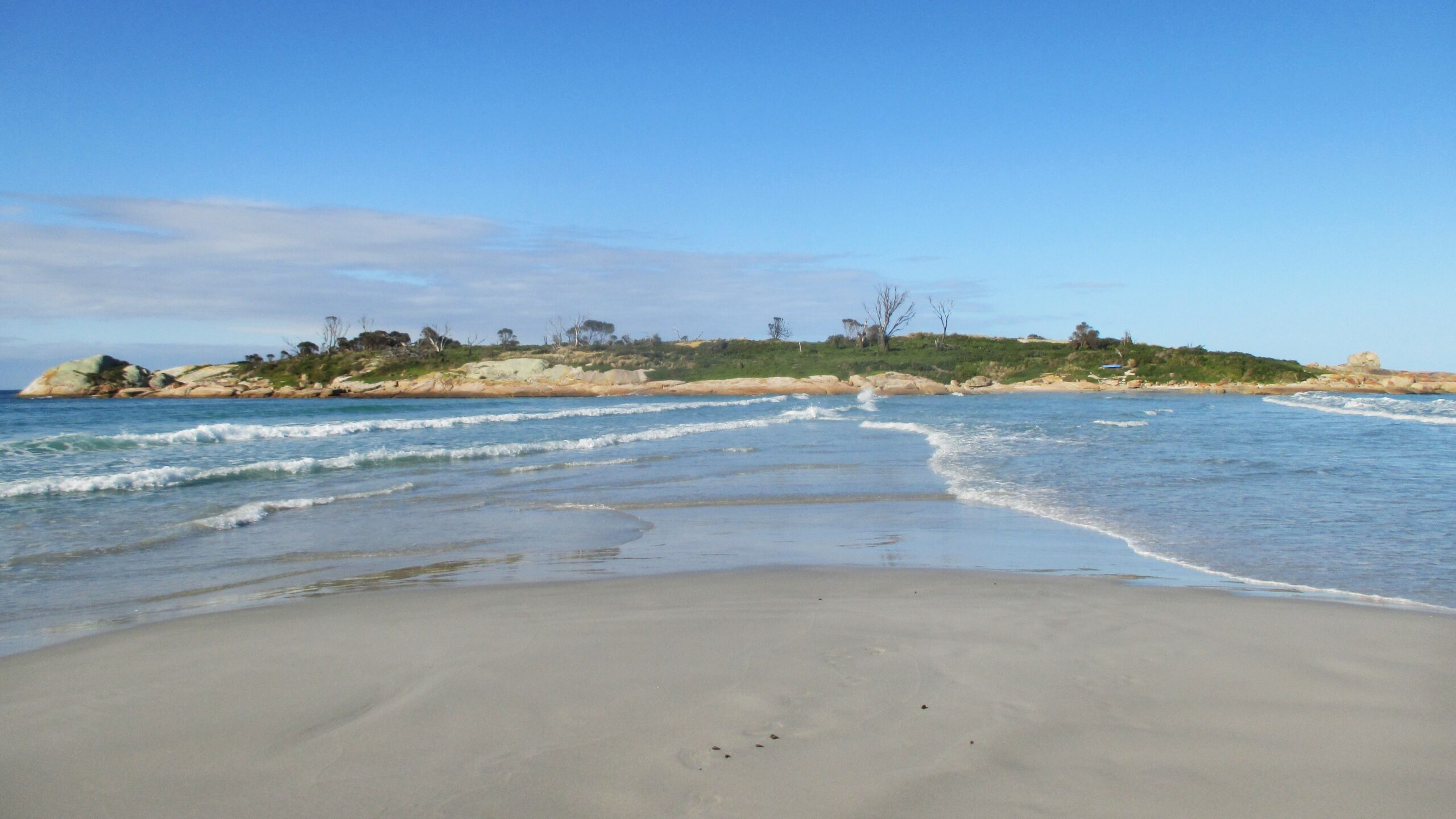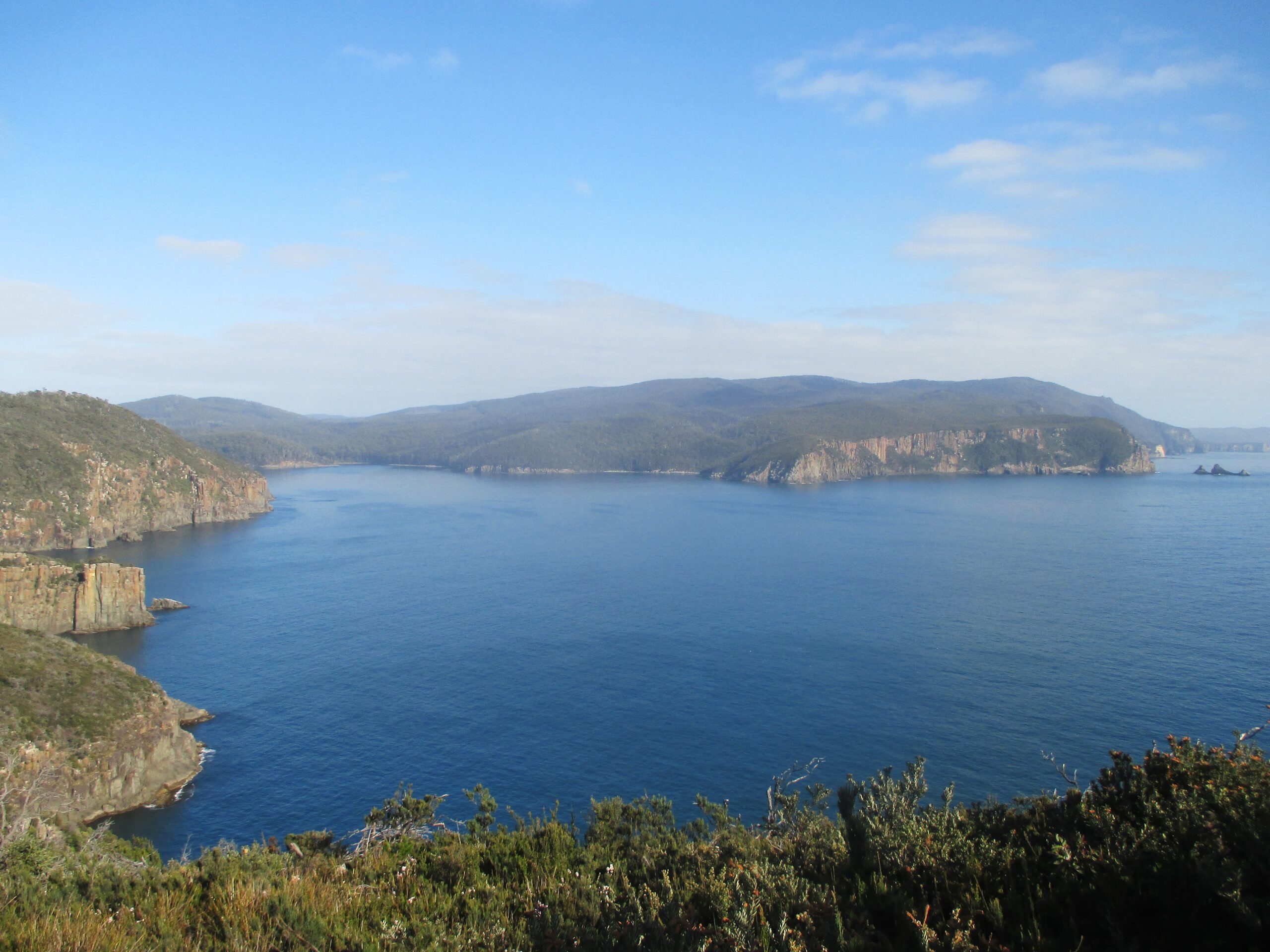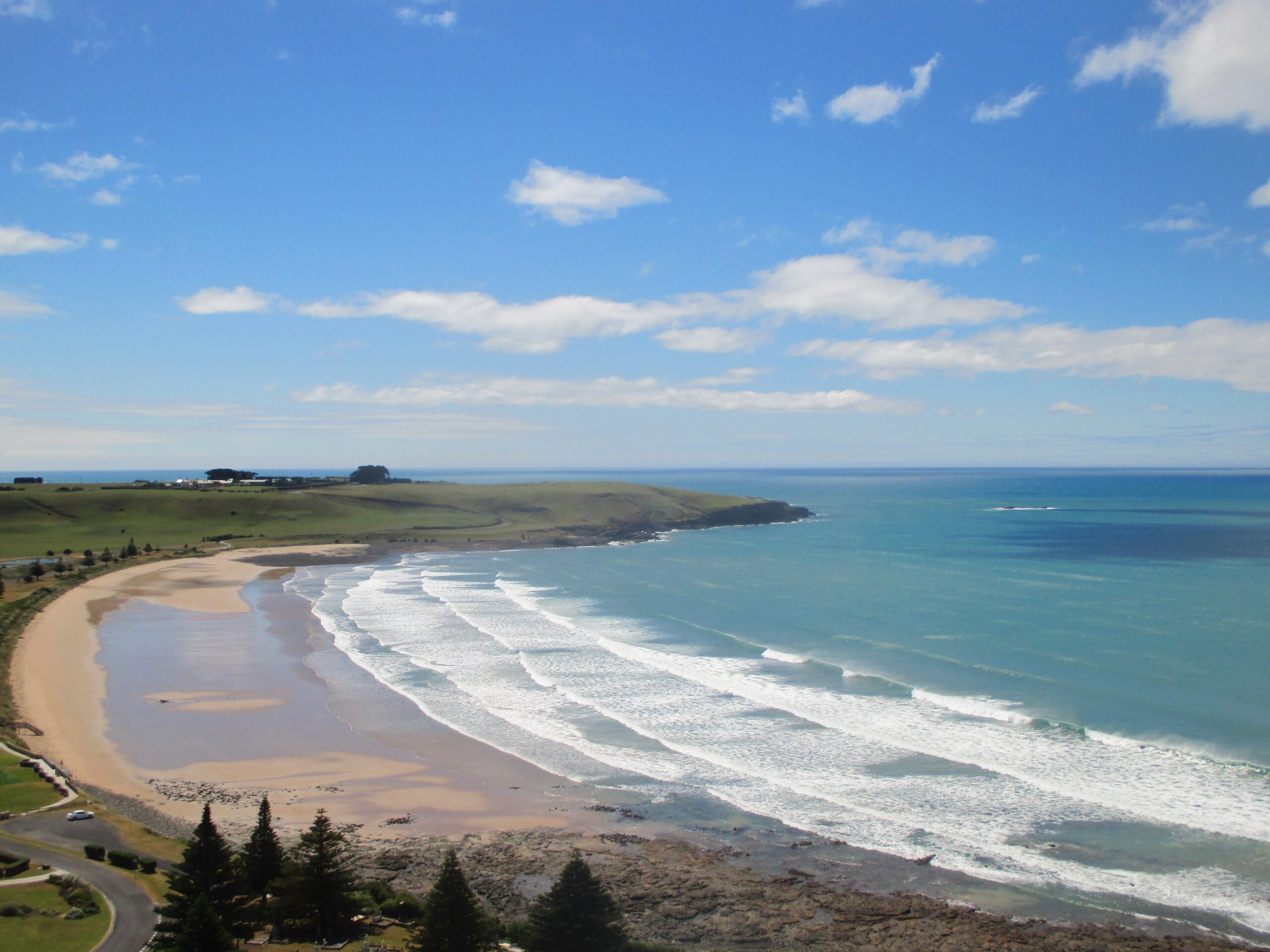Part Two of the Hitchhike
I headed south along the coast from The Bay of Fires, landing in Bicheno, where I decided to enjoy the luxury of a hostel. There’s a long sandy beach with a backdrop of the mountains, almost rivalling Kaikoura in New Zealand. When the tide was out, the beach was very wide, perfect for a gentle stroll.
Bicheno homed a colony of penguins, the little blue, or ‘fairy’ penguins, which are native to Australia. You can pay for a tour, or you can head out by yourself at dusk or dawn. I did the latter, and it was a fun experience seeing them traipse up the rocks to their colony. Just be considerate of getting in the way of their route back to their nests. And avoid shining a torch at them, or flashes from cameras – no matter how great your desire to get a clear photo of the cute creatures.


I continued south to another National Park in the East, Freycinet. I don’t think the photos do it justice, and my words certainly won’t. The views are breath-taking. There is a selection of shorter and long walks to choose from and you could easily spend a week here, with plenty of activities to partake in.
I was short on time and chose the walk with arguably the best view of the area I wasn’t disappointed with a panoramic postcard-potential view of Wineglass Bay, with the elevated forest behind the curved beach.

The next location was slightly different. Historically, Maria Island hosted convict settlements. Nowadays, you can rent a cell for a night, which I did. It’s a short ferry ride over, and the island has a lot of wildlife. Notably, it has seen the reintroduction of the endangered Tasmanian devil and supports a thriving population.
The island is a National Park and has a rugged terrain of cliffs hills and fantastic walking territory. On a late afternoon stroll and I encountered a wisdom of wombats, happily grazing away. The night was surprisingly – and worryingly – eventful, with one of the fellow guests almost burning down the accommodation after leaving their fire unattended in the room. Thanks to the quick-thinking park ranger, who put the fire out, the danger was prevented.



Tasmania continued to gift spectacular scenery, this time in Tasman National Park. After arriving back on the mainland, I was lucky to get a couple of pleasant rides through a sparsely populated area. To top that off, a member of the Mormon Church went out of his way to drive me all the way into the campsite, arriving in the early evening, to ensure I made it there before nightfall.
The campsite was in the midst of giant gum trees, at the mouth of a horseshoe-shaped bay. I met some fellow travellers and enjoyed a few drinks around the campfire. Alongside us was an over-friendly wallaby, most likely accustomed to human food. From the campsite there is a trail that takes you around the coast and gives a dramatic sight from the cliffs. A gentle clamber up and you find yourself on the edge of a 50-metre drop to the sea.




One of the travellers in Tasman, Roy, deserves a special mention. He selflessly invited me to join him on his tour of Tasmania, enjoying a few days rest before a marathon bike race had coming up. Together, we snuck into the remains at Port Arthur. I felt bad for sneaking in, but we were only there for a few minutes and, well, when in Rome.
We also stayed a night in a hostel in Hobart, and I contemplated starting my search for work. Instead, the offer of a few more days travel with Roy was too tempting. We made it to Bruny Island, another gem of Tasmania. Roy navigated his four-wheeler across the beach to the campsite at Cloudy Corner where we pitched our tents, and ate around a campfire, in another remote corner of the island.





The next day we went up to Hartz Mountains National Park. And this was the other end of Tasmania’s spectrum – the mountains. Although not one of the world’s largest ranges, it was stark contrast to the beaches. The elevation also meant it was much cooler than the other parks. Here, you can explore along hiking trails to lakes and waterfalls.
After saying thank you and farewell to Roy, a short ride took me to Mount Field National Park. Attractions include the giant eucalyptus trees, glow worms that light up the grotto at night, and a multi-layered waterfall. Which was much lighter in volume when I visited.





The most epic trip was to the simply named Southwest National Park. There’s a single main road in and out of the park. And because of the untouched and remote nature of the area, it’s considered the final remaining of wilderness in Tasmania. Once you’re in the heart of the park, you understand why.
The lakes are huge and the mountains on a scale not commonly seen in Australia. Incidentally, there are rumours it remains a refuge to the ‘extinct’ Tasman Tiger. While there hasn’t been any concrete evidence of its existence for a century, a wildlife expert gave a credible report of a sighting in the 1980s. Without photos of a tiger in the past thirty years, I find it hard to believe they survived. However, the fact it’s considered a possibility, demonstrates the vastness of the park.



The last leg of my Tasmanian tour took me to the north coast, Burnie and Stanley, with more fantastic coastline. And my final stop was in Cradle Mountain National Park, one of the most popular destinations. Here I saw snow – in Australia – the first and only time in my 14 months there.
I celebrated my birthday on the way out, surviving a close call while given a lift with otherwise lovely overseas visitors. Unfortunately, they weren’t knowledgeable of the nation’s road signs. Fortunately, the other drive swerved and avoided us. Another, less obvious risk of putting yourself in the hands of an unknown driver – you rely on their driving ability.

